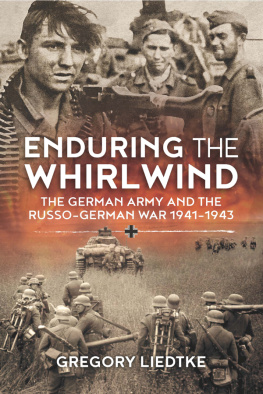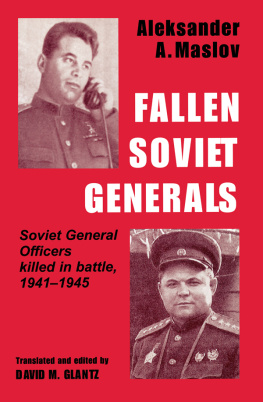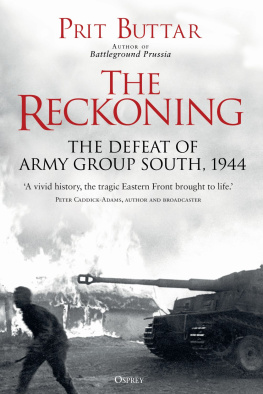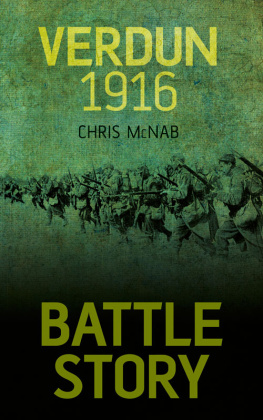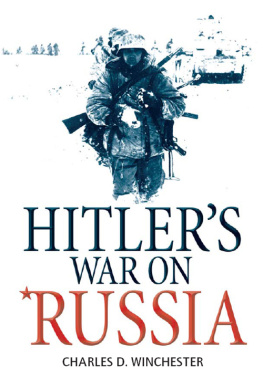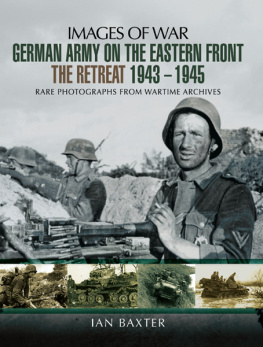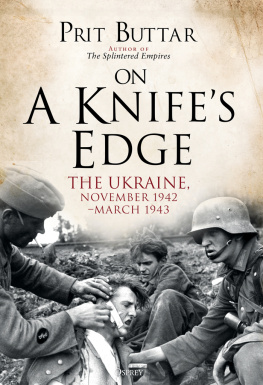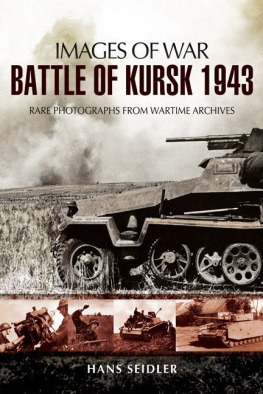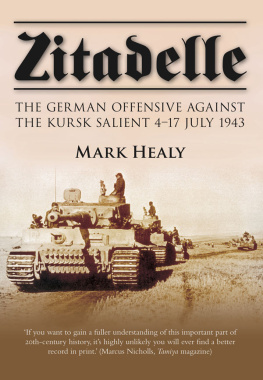Gerasimova - The Rzhev slaughterhouse : the Red Army’s forgotten 15-month campaign against Army Group Center, 1942-1943
Here you can read online Gerasimova - The Rzhev slaughterhouse : the Red Army’s forgotten 15-month campaign against Army Group Center, 1942-1943 full text of the book (entire story) in english for free. Download pdf and epub, get meaning, cover and reviews about this ebook. year: 2013, publisher: Helion and Co, genre: Romance novel. Description of the work, (preface) as well as reviews are available. Best literature library LitArk.com created for fans of good reading and offers a wide selection of genres:
Romance novel
Science fiction
Adventure
Detective
Science
History
Home and family
Prose
Art
Politics
Computer
Non-fiction
Religion
Business
Children
Humor
Choose a favorite category and find really read worthwhile books. Enjoy immersion in the world of imagination, feel the emotions of the characters or learn something new for yourself, make an fascinating discovery.

- Book:The Rzhev slaughterhouse : the Red Army’s forgotten 15-month campaign against Army Group Center, 1942-1943
- Author:
- Publisher:Helion and Co
- Genre:
- Year:2013
- Rating:3 / 5
- Favourites:Add to favourites
- Your mark:
The Rzhev slaughterhouse : the Red Army’s forgotten 15-month campaign against Army Group Center, 1942-1943: summary, description and annotation
We offer to read an annotation, description, summary or preface (depends on what the author of the book "The Rzhev slaughterhouse : the Red Army’s forgotten 15-month campaign against Army Group Center, 1942-1943" wrote himself). If you haven't found the necessary information about the book — write in the comments, we will try to find it.
Why was one of the greatest battles of the Second World War consigned to oblivion in the Soviet Union? Why were the forces of the German Army Group Center in the Rzhev - Viazma salient not encircled and destroyed? Whose fault is it that the German forces were able to withdraw from a pocket that was never fully sealed? Indeed, are there justifications for blaming this lost victory on G.K. Zhukov? In this book, which has been recognized in Russia as one of the best domestic studies of the Rzhev battle, answers to all these questions have been given. The author, Svetlana Gerasimova, has lived and worked amidst the still extant signs of this colossal battle, the tens of thousands of unmarked graves and the now silent bunkers and pillboxes, and has dedicated herself to the study of its history.
Svetlana Aleksandrovna Gerasimova is a historian and museum official. After graduating from Leningrad State University with a history degree, she worked in the Urals as a middle school history teacher, before moving to Tver, where she taught a number of courses in history and local history, and about museum work and leading excursions in the Tver School of Culture. She earned her Ph.D. in history from Tver State University in 2002. For more than 20 years, S.A. Gerasimova has been working in the Tver State Consolidated Museum, and is the creator and co-creator of a many displays and exhibits in the branches of the Museum, and in municipal and institutional museums of the Tver Oblast. Recent museum exhibits that she has created include The Battle of Rzhev 1942-1943 and The Fatal Forties Toropets District in the Years of the Great Patriotic War. She has led approximately 20 historical and folklore-ethnographic expeditions in the area of Tver Oblast and is the author of numerous articles in such journals as Voprosy istorii [Questions of History], Voenno-istoricheskii arkhiv [Military History Archive], Voenno-istoricheskii zhurnal [Journal of Military History] and Zhivaia starina [The Living Past], and of other publications. In 2009, she served as a featured consultant to a Russian NTV television documentary about the Battle of Rzhev, which quickly became controversial for its very frank discussion of the campaign.
Stuart Britton is a freelance translator and editor residing in Cedar Rapids, Iowa. He has been responsible for making a growing number of Russian titles available to readers of the English language, consisting primarily of memoirs by Red Army veterans and recent historical research concerning the Eastern Front of the Second World War and Soviet air operations in the Korean War. Notable recent titles include Valeriy Zamulins award-winning Demolishing the Myth: The Tank Battle at Prokhorovka, Kursk, July 1943: An Operational Narrative (Helion, 2011), Boris Gorbachevskys Through the Maelstrom: A Red Army Soldiers War on the Eastern Front 1942-45 (University Press of Kansas, 2008) and Yuri Sutiagins and Igor Seidovs MiG Menace Over Korea: The Story of Soviet Fighter Ace Nikolai Sutiagin (Pen & Sword Aviation, 2009). Future books will include Svetlana Gerasimovas analysis of the prolonged and savage fighting against Army Group Center in 1942-43 to liberate the city of Rzhev, and more of Igor Seidovs studies of the Soviet side of the air war in Korea, 1951-1953
Gerasimova: author's other books
Who wrote The Rzhev slaughterhouse : the Red Army’s forgotten 15-month campaign against Army Group Center, 1942-1943? Find out the surname, the name of the author of the book and a list of all author's works by series.

